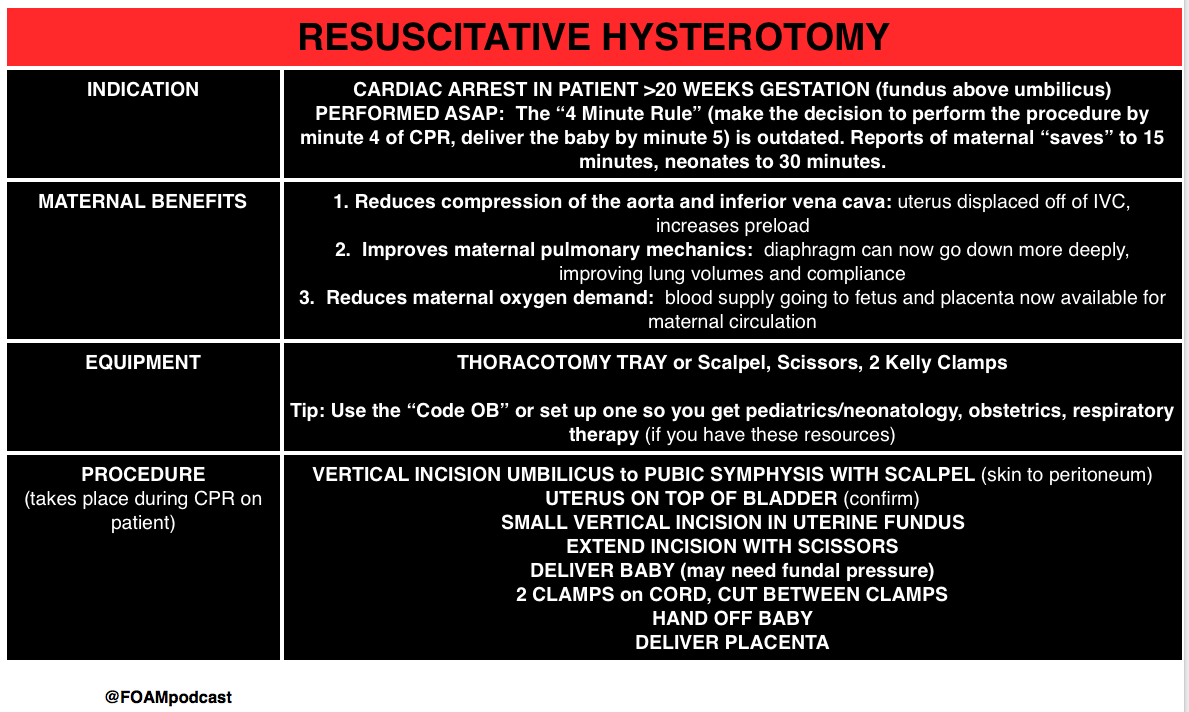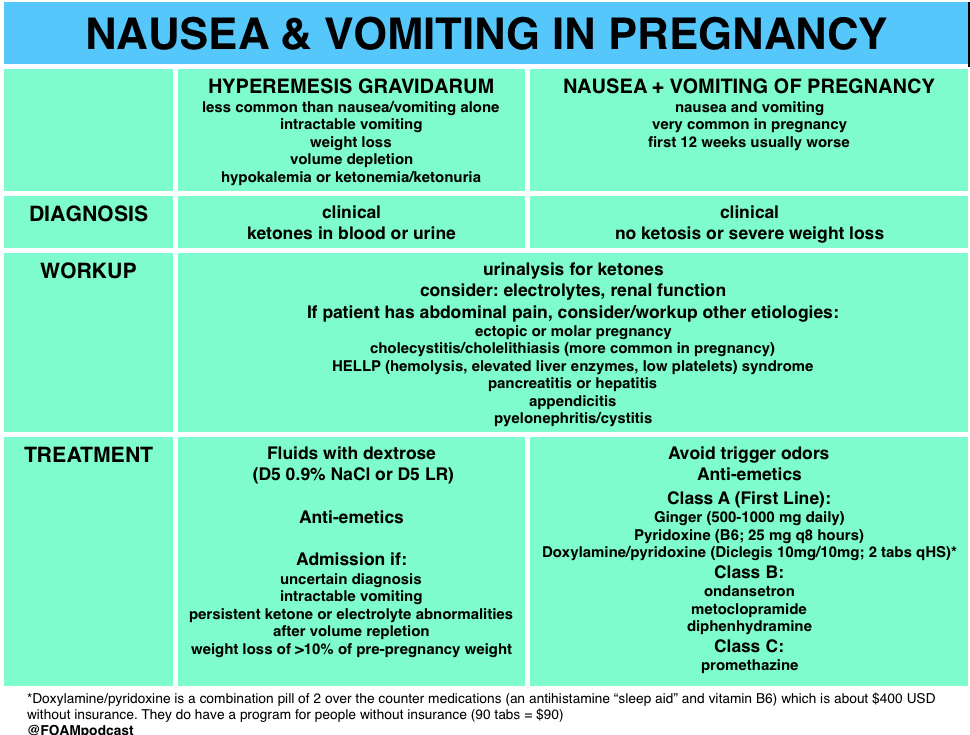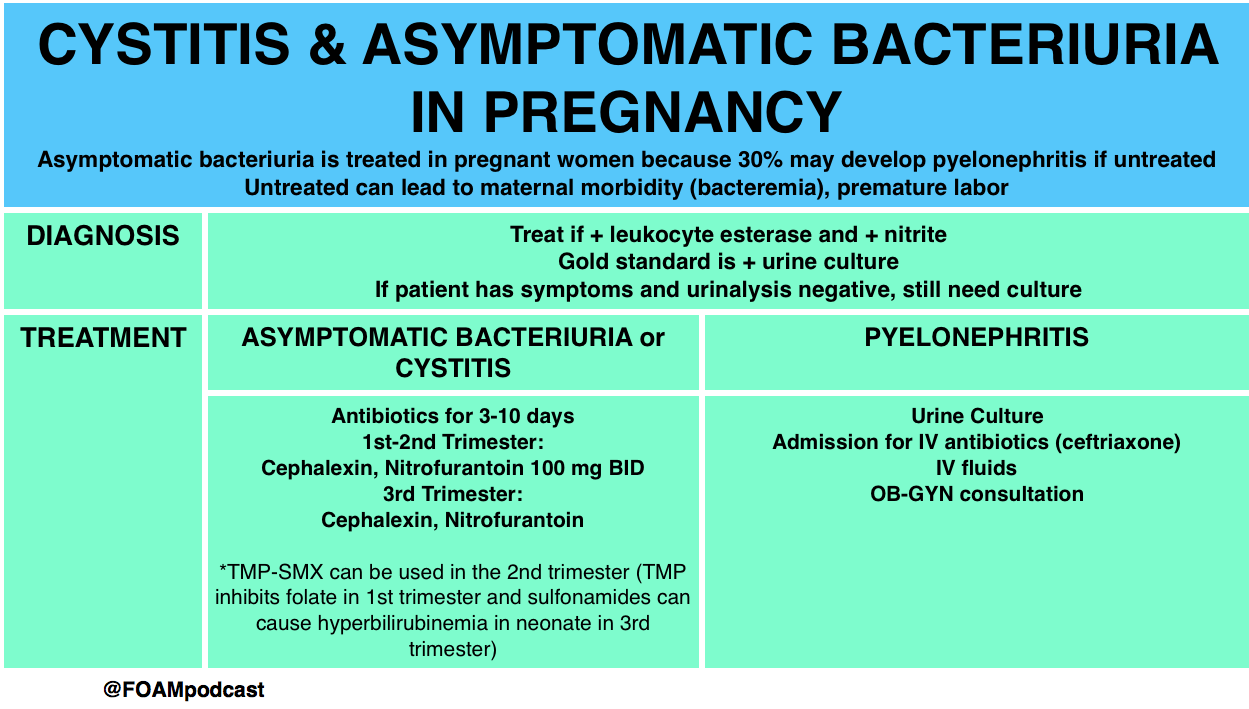We review a talk by Dr. Sara Gray from SMACC (Social Media and Critical Care) conference in June 2016, Resuscitative hysterotomy, which is the new name for perimortem c-section [1]. In this talk she challenges the “4 minute” rule: if resuscitative efforts following maternal circulatory arrest are unsuccessful, cesarean delivery should be commenced at 4 minutes and completed by 5 minutes to optimize fetal outcome.
Core Content
We delve into core content on pregnancy emergencies using Rosen’s Emergency Medicine (8th edition) Chapter 98and Tintinalli’s Emergency Medicine (8th edition) Chapter 178 as a guide.
Nausea and vomiting are very common in pregnancy, but few patients have hyperemesis gravidarum (~2%). Hyperemesis gravidarum is characterized by severe nausea and vomiting with starvation ketosis and significant weight loss and dehydration [2,3].
Rosh Review Emergency Board Review Questions
A 22-year-old woman presents complaining of vaginal bleeding and cramping for the last 4 hours. She is known to be 14-weeks pregnant. Her cervical os is dilated to 4 cm and she is actively bleeding. Pelvic ultrasound shows the gestational sac in the lower uterine segment near the cervix. Which of the following is the most likely diagnosis?
A. Complete abortion
B. Inevitable abortion
C. Missed abortion
D. Septic abortion
[accordion]
[toggle title=”Answer” state=”closed”]
The patient is experiencing an inevitable abortion, which is characterized by an open cervical os and a gestational sac at the opening of the uterus on ultrasound. The case should be discussed with the patient’s obstetrician as the patient may ultimately require dilatation and curettage if all the products of conception (POC) do not pass spontaneously or the bleeding is not controlled. A complete abortion (A) occurs when the patient has passed all POC have passed. On examination, the cervix is closed and the uterus is firm and nontender. A missed abortion (C) occurs when a pregnant patient fails to pass the products of conception greater than two months after fetal demise. The pregnancy test will be negative, however ultrasound will show retained POC. A septic abortion (D) occurs when the patient develops foul-smelling discharge, vaginal bleeding, uterine tenderness and peritoneal signs following a spontaneous or induced abortion.
[/toggle]
[/accordion]
[accordion]
[toggle title=”What is the most common cause of bleeding in the primigravid woman?” state=”closed”]
Threatened abortion
[/toggle]
[/accordion]
References:
- Rose CH, Faksh A, Traynor KD, Cabrera D, Arendt KW, Brost BC. Challenging the 4- to 5-minute rule: from perimortem cesarean to resuscitative hysterotomy. American journal of obstetrics and gynecology. 213(5):653-6, 653.e1. 2015. [pubmed]
- Heaton, H. “Chapter 98: Ectopic Pregnancy and Emergencies in the First 20 Weeks of Pregnancy.” Tintinalli’s Emergency Medicine: A Comprehensive Review. 8th edition
- “Chapter 178: Acute Complications of Pregnancy.” Rosen’s Emergency Medicine




